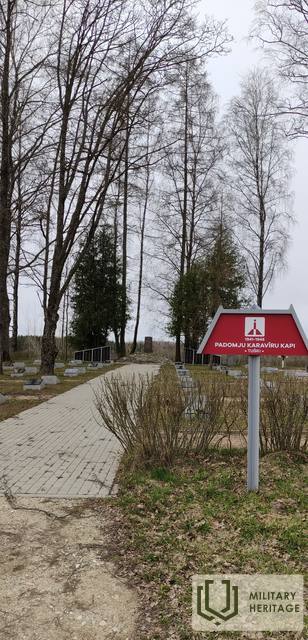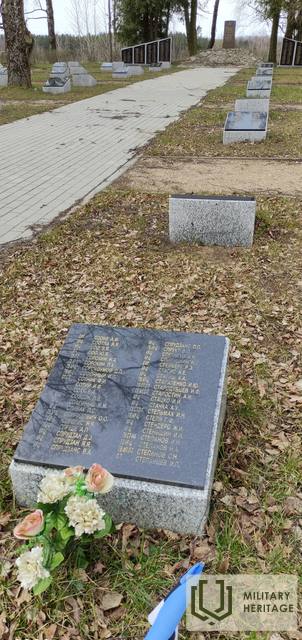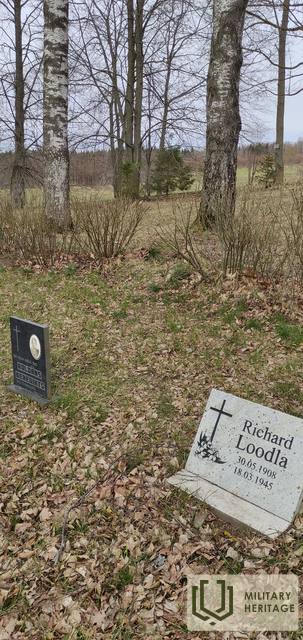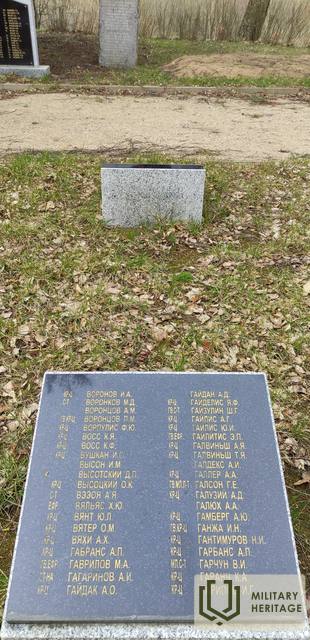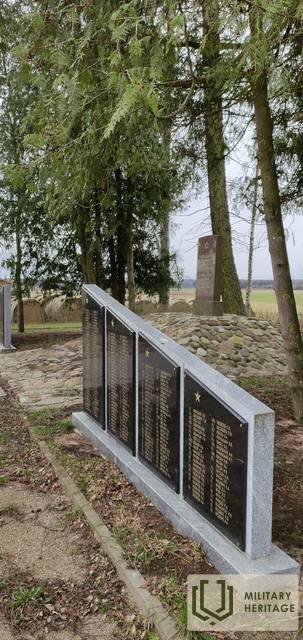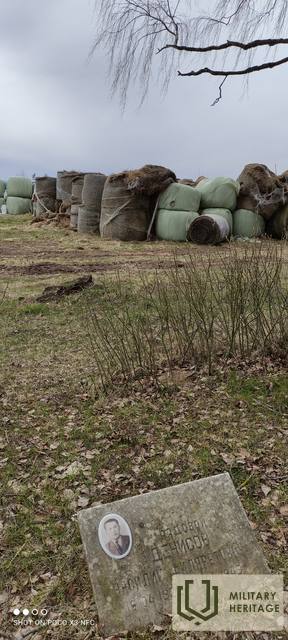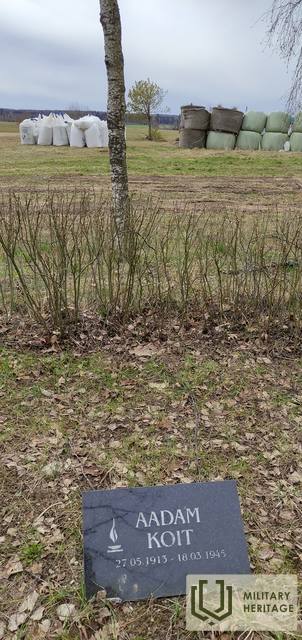Soviet soldiers' cemetery "Tuški" Memorial site

The fraternal cemetery of the Red Army 130th Latvian and 8th Estonian Rifle Corps soldiers is located about 350 metres south-west of the Blīdene-Remte road. The name derives from the farm Tušķi, which was located 400 m south of the cemetery.
On 17 March 1945, the last attempt of the Red Army in Kurzeme began. The 308th Latvian Rifle Division attacked south-west and west of the Tušķi homestead and during three days of fighting crossed the Blīdene-Remte road in the 142.2 area of the highlands and reached the Jaunāsmuižas-Mezmali line. The soldiers killed during the battles were buried in several small cemeteries near Ķēķiai, Vērotāji, Jaunāsmuiža and elsewhere.
In the late 1960s, when the Soviet Union began to commemorate the Second World War, a new cemetery was established north of the ruins of the Tušķu homestead, where it was planned to rebury all the soldiers who had fallen in the Pilsblidene and Kaulači area. In reality, the reburial was partial, as very often the fallen soldiers remained in their original gravesites, but only their names were overwritten in the cemetery of the Tuški brothers. The names of the soldiers of the 8th Estonian Rifle Corps, whose main wartime cemetery was located on the site of the present Pilsblidene cemetery, can also be found in the Tuški Brethren Cemetery.
There is also a monument to Jakob Kundera, a soldier of the 8th Estonian Rifle Corps, to whom the object 'Kundera dots' is dedicated. Immediately after the battle, Jakob Kundera was buried in what is now Pilsblidene Cemetery, and later reburied in the Tuški Brethren Cemetery.
Used sources and references:
Grave Map – Brothers Grave Committee (bkkomity.lv)
"Eyewitness" - Stories of Fallen Soldier: https://www.youtube.com/watch?v=CVBqH3zRduU
Related timeline
Related stories
Exhumation of Soviet Army soldiers in Blīdene parish in 2019
In July 2019, the Soldiers' Search Team "Leģenda" exhumed 66 soldiers' ashes in a forest in Blīdene parish. Due to superficiality or omission during the Soviet era, the majority of these soldiers are counted as officially reburied during the Soviet years. The names of these soldiers are even engraved on the tombstones in the Tuški Brethren Cemetery.




